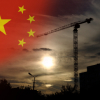Insights
China and India’s contrasting inflation front(Englisch)
We explore the opportunities and risks emanating from China’s near-zero inflation and India’s above-average consumer prices.
Balancing Act-Monthly insights: Multi-Asset Team-October 2023(Englisch)
Defying seemingly broad sentiment that a slowdown is coming, the US economy continues to chug along, and bond yields are continuing to wake up to the monetary reality that long-term rates need to be repriced accordingly. The adjustment has been aggressive and fast. Still, there is a natural limit to these types of moves.
Modern alpha relies on multiple sources and is therefore more stable and recurring than the traditional “big bets”. For most investors, the main source of alpha is fundamental research. But to add stability it is plausible to combine fundamental research with quantitative strategies as an additional alpha source.
On the Ground in Asia-Monthly Insights: Asian Fixed Income-September 2023(Englisch)
Amid the current rise in oil prices, global central banks have become more vigilant against inflation, becoming increasingly wary of risks occasioned by a potentially premature end to their rate hiking cycles. Consequently, we deem it prudent to be more cautious on duration. We therefore have a largely neutral view on duration for most countries in the region.
We have long been enthusiastic about the ASEAN share markets, and the region continues to offer appealing prospects. While the fundamental drivers behind ASEAN’s growth and opportunities are not entirely new, in our view the trends remain irrepressible. We discuss two key pillars—industrialisation and consumerisation—that are expected to help cement ASEAN’s place in the minds of investors.
Realigning fixed income with purpose(Englisch)
While fixed income issuance has become a standard mechanism for governments and companies to raise finance, it often lacks a defined purpose. However, the growing trend of responsible investing is changing that. The need to tackle our planet’s many climate, environmental and societal challenges is reuniting fixed income with its sense of purpose.
New Zealand Fixed Income Monthly – September 2023(Englisch)
Although the Reserve Bank of New Zealand stated in May that inflation was likely to return to its target range of 1-3% per annum if the Official Cash Rate remained at a restrictive level for some time, market expectations for interest rates have changed significantly since. At that time, rate hikes were expected to lead to rate cuts as inflation began to ease. New Zealand’s inflation has proved stickier than expected, however, as shown by the 6.0% annual rise seen in the consumers price index for the June 2023 quarter. This shows that interest rates continue to be held hostage by high inflation.
Japan primed for resurgence after a turnaround year (Englisch)
We believe that a long-term revival looms for Japan. Deflationary pressures are dissipating amid rising wages. The financial markets are headed for a resurgence, supported by robust stocks—which could benefit further from a re-allocation of the country’s vast household savings—and BOJ monetary policy headed towards normalisation after decades of unorthodox easing.
Navigating Japan Equities: Monthly Insights from Tokyo (October 2023)(Englisch)
This month we discuss the timing of Japan’s savings to investments push as assets held by households hit a record high; we also look at the rise in the domestic long-term yield to a 10-year peak and assess its potential impact on the equity and credit markets.
New Zealand Equity Monthly – September 2023(Englisch)
New Zealand equities continued to see weakness in September, with the market falling by approximately 3%. This partly reflected broader volatility given that the Australian market declined by about 4% and US equities saw a fall of approximately 5%. More notably on a domestic level, however, the market’s direction was affected by the key August round of corporate results. The August reporting season is the most significant for New Zealand given that many companies release their full-year results and some firms with December fiscal year-ends release their half-year results during the month.
Harnessing Change - Monthly Insights: Asian Equity-September 2023(Englisch)
With oil markets closing in on US dollar (USD) 100 per barrel and US bond yields reaching 16-year highs, one could be excused for being struck by a bout of conservatism. With valuation dispersions again back to all-time highs, we contend that the risk-reward looks more favourable when taking a long-term view of Asia.
“Bold and fundamental changes” to Japan’s NISA a positive driver for Japanese equities(Englisch)
Changes to Japan’s domestic tax-free savings scheme – the Nippon Individual Savings Account (NISA) –are expected to deliver an increased flow into mutual funds both international and domestic, and attract a younger generation of investors in one of the world’s most liquid markets in terms of household wealth.
Global Investment Committee’s outlook(Englisch)
We expect occasionally volatile, but positive trends for the global economy, financial system and markets in each of the next four quarters. Regionally, we prefer the European and Pacific Ex-Japan markets for the 4Q, and also Japan’s on a 12-month view.
Nikko Asset Management’s investment experts delve into the risks and opportunities arising from China’s flagging economy and its weakening property sector.
Shift to secular growth could be a “real deal” moment for Japan equities(Englisch)
The current rise in Japanese equities could have legs, setting it apart from other phases in the previous 30 years which often led to disappointment. Japan’s shift from cyclical to secular growth, highlighted by labour shortages fuelling a rise in wages, is a development that is setting the equity market on a fundamentally different trajectory. We expect wage developments, as a factor affecting both consumption and inflation trends, to help determine further gains for Japan equities.
Japan’s macro picture is positive, but focus on corporate earnings(Englisch)
It isn’t wise to dwell on the details of any countries’ newly published macroeconomic data, but the overall outlook for Japan is slow but steady economic growth. However, as the last few decades have shown, such should not discourage investors if the powerful corporate governance trends and technological advancements continue as we believe they will.
Balancing Act-Monthly insights: Multi-Asset Team-September 2023(Englisch)
The markets are pricing “higher for longer” with US Treasury 10-year yields pressing above their October 2022 highs, tempering enthusiasm across global equities into neutral sentiment territory. As inflation pressures continue to ease without tipping the jobs market into recession, the US Federal Reserve still looks on course to achieve a soft landing. However, not surprisingly the markets remain slightly on edge as the top in yields cannot yet be called for certain.
On the Ground in Asia-Monthly Insights: Asian Fixed Income-August 2023(Englisch)
Indian and Indonesian bonds are expected to fare relatively better than their regional peers, supported by their attractive carry, positive macro backdrop and policy credibility. As for currencies, expectations that US interest rates may have reached their peak could weigh on US dollar sentiment and favour Asian currencies in return.
Harnessing Change - Monthly Insights: Asian Equity-August 2023(Englisch)
While regional markets understandably retained its focus on the economic weakness in China, we believe that the fear gripping the markets belies the region’s long-term sustainable return and positive change opportunities. The challenges that China must overcome are not insurmountable and certainly do not translate to systematic or social instability risk, in our view.
Japan’s long-term value is getting unlocked(Englisch)
There’s more to Japan’s renaissance than relatively inexpensive valuations. Companies have become more receptive to corporate reform and shareholder engagement; Japan’s services sector is benefitting from a resumption in tourism; and, in Japan, inflation is settling at supportive levels after years of deflation.
Focusing on the knowns in an era of unknowns(Englisch)
We are currently in the midst of a regime change to a world of slower growth, periodic bouts of inflation and technological transformation. While much of what the future holds is unknowable, such as the impact of artificial intelligence, there are other clear long-term trends that can help guide investors: the path to clean energy, growing healthcare requirements and the re-emergence of the travel industry.
India’s transformational trends
Structural reforms, investments in energy transition, rising consumption and vast improvement in India’s infrastructure, productivity and manufacturing sector are expected to bolster the country’s next phase of economic growth and development.
Climate change solutions in Japan(Englisch)
The climate change crisis we are witnessing presents both challenges and opportunities. Focusing on the latter from an investment perspective, in our view asset managers are in a position to help facilitate society’s goals of reducing GHG emissions and decarbonising.energy
Five Years of Disruptive Innovation(Englisch)
To mark five years since the launch of the Nikko AM ARK Disruptive Innovation Fund, Nikko AM and ARK Invest take a look at the five primary innovation platforms, their achievements over the last five years, and our expectations for them during the next five to ten years.
Navigating Japan Equities: Monthly Insights from Tokyo (September 2023)(Englisch)
This month we take a closer look at Japan’s 2Q GDP surge and analyse the factors that could offset a potential slowdown in exports; we also assess why the markets are less perturbed by a weak yen compared to a year ago and discuss the prospects of the currency strengthening in the months ahead.




























